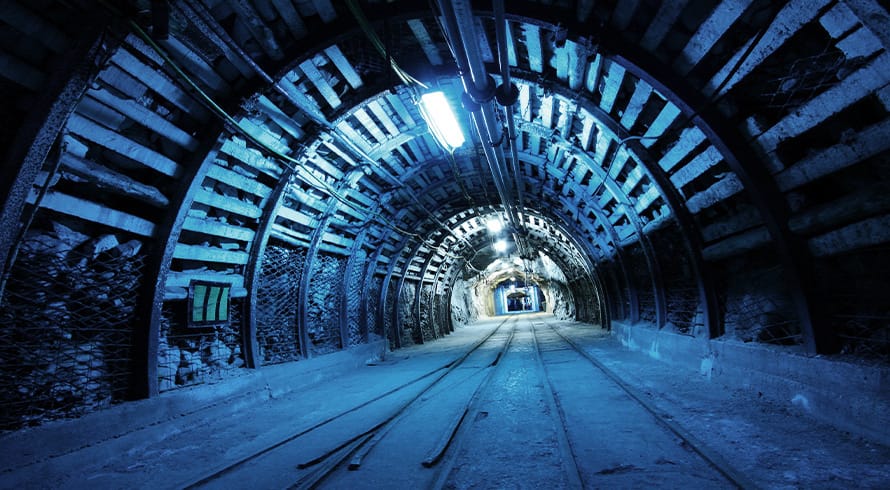Business Rescue 101 – An introduction - Part 1
The mechanism of business rescue provides a company with breathing space to restructure its affairs under the management of a business rescue practitioner, and for a business rescue plan to be prepared to take the business forward. Business rescue should be seen as an opportunity to restructure and organise the company’s affairs, rather than be seen as the failure of the company.
Our Business Rescue, Restructuring and Insolvency team at CDH has specialist knowledge, skill and experience in all aspects of the business rescue process. We also represent all role players in the business rescue process, including business rescue practitioners, creditors, employees, shareholders and directors.
Since business rescue will be at the forefront of fighting the aftermath of the COVID-19 pandemic and since we anticipate for many companies to consider going into business rescue in the coming weeks and months, we will deal with the business rescue process (and related aspects) over two editions of our newsletter, so as to ensure that you are equipped with all the most important information on business rescue (no matter which role player you are in the process).
In this edition we deal with the definition and objectives of business rescue, the modes of commencement and requirements for placing a company under business rescue and the legal consequences of business rescue proceedings.
Definition of “Business Rescue”
“Business Rescue” is defined in section 128(1)(b) of the Companies Act 71 of 2008 (Companies Act) as “proceedings to facilitate the rehabilitation of a company that is financially distressed”.
The proceedings are aimed at aiding a company which is in financial distress, by allowing it to reorganise and restructure its affairs, assets, equity, debts, property and liabilities.
In order to aid the rescue of a financially distressed company, Chapter 6 of the Companies Act affords the company under business rescue with various procedural and substantive protections and advantages during the business rescue procedure, which will be dealt with in detail hereunder.
Objectives of business rescue
In terms of section 128(1)(b)(iii) of the Companies Act, business rescue has one of the following two objectives:
- to restructure the affairs of the company in an attempt to ensure that the company continues in existence on a solvent basis; or
- if it is not possible for the company to so continue in existence, that the business rescue results in a better return for the company’s creditors and shareholders than would ordinarily result from the immediate liquidation of the company.
Tools to achieve the business rescue objectives
Chapter 6 of the Companies Act provides the following tools to achieve the abovementioned objectives:
- the temporary supervision of the company, and the management of its affairs, business and property, by a business rescue practitioner (BRP);
- a temporary moratorium on the rights of claimants against the company or in respect of property belonging to the company or lawfully in the possession of the company; and
- the development and implementation, if approved, of a business rescue plan to rescue the company by restructuring its affairs.
Modes of commencing business rescue proceedings
There are two ways in which a company can be placed under business rescue, namely:
- Voluntary business rescue proceedings – when the board of directors of a company passes a resolution to place the company under business rescue. This process is regulated by section 129 of the Companies Act; and
- Compulsory business rescue proceedings – when application is made to court to place the company under business rescue by an affected person. This process is regulated by section 131 of the Companies Act.
Since the requirements for both modes listed above are different, and since both modes are regulated by different provisions, we will discuss them both separately hereunder.
Requirements for placing a company under voluntary business rescue
A board of directors of a company can, in terms of section 129 of the Companies Act, resolve to place the company under business rescue if (i) the company is financially distressed; and (ii) there is a reasonable prospect of rescuing the company.
A company will be financially distressed in terms of section 128(1)(f) of the Companies Act if:
- It appears to be reasonably unlikely that the company will be able to pay all of its debts as and when they become due and payable within the immediately ensuing 6 months (commercial insolvency); or
- if its liabilities will exceed its assets within the ensuing six months (factual or balance sheet insolvency).
The Companies Act does not provide any guidance on how to determine whether there is a reasonable prospect of rescuing a company, however there is plethora of case law where our South African courts have given meaning to the term ‘reasonable prospect’.
It is important to be cognisant of the fact that in order for a company to be “rescued”, only one of the two objectives set out in section 128(1)(b)(iii) of the Companies Act, need to be met (as listed above). Therefore, even if it is clear that the company which will be placed under business rescue will never trade on a solvent basis again, there could still be a reasonable prospect of the company being “rescued”, if the business rescue will result in better returns for the company’s creditors and shareholders, than if the company was placed under immediate liquidation.
Requirements for placing a company under business rescue by way of a court order
As alluded to above, section 131 of the Companies Act makes provision for placing a company under business rescue by way of a court order.
The aforementioned section states that unless a company has adopted a resolution contemplated in section 129 of the Companies Act, an affected person may apply to a court at any time for an order placing a company under supervision and commencing business rescue proceedings.
An “affected person” is defined in section 128(1)(a) of the Companies Act as:
- A shareholder or creditor of the company;
- Any registered trade union representing employees of the company; and
- If any of the employees of the company are not represented by a registered trade union, each of those employees or their respective representatives.
In order to succeed with an application to place a company under compulsory business rescue, the “affected person” must satisfy the court that there is a reasonable prospect of rescuing the company and that:
- the company is financially distressed; or
- the company has failed to pay over any amount in terms of an obligation under or in terms of a public regulation, or contract, with respect to employment related matters; or
- it is otherwise just and equitable to do so for financial reasons.
The business rescue proceedings will commence as soon as the business rescue order is granted by the court.
Legal consequences of business rescue proceedings
When a company has been placed under business rescue (voluntarily or by way of a court order), there are legal consequences for a number of the company’s activities and stakeholders, including creditors. The objective is to protect a company while the BRP attempts to return it to a viable position.
In summary, the primary consequences of business rescue proceedings on stakeholders are as follows:
- civil legal proceedings against the company, including enforcement action, are stayed until the end of the business rescue process. There are some exceptions which will be dealt with below;
- the disposal of the company’s property is restricted;
- the refinancing of the company is facilitated by allowing for unencumbered company assets to be used to secure loans;
- employment contracts are generally protected. There are however some exceptions which will be dealt with below; and
- other contracts of the company may be cancelled, or the company’s obligations may in certain circumstances be entirely, partially or conditionally suspended by the BRP.
Some of these consequences are briefly dealt with hereunder.
(i) General Moratorium on Civil Legal Proceedings
In terms of section 133(1) of the Companies Act, no legal proceedings, including enforcement action, may be commenced or continued with in any forum against the company, or in relation to any property belonging to the company, or lawfully in its possession, during the business rescue proceedings. This moratorium provides the company with “breathing space”, while the BRP attempts to rescue and restructure the company through the implementation of a business rescue plan.
(ii) Protection of Property Interests
The power of a company to deal with its property is restricted during business rescue and the company may only dispose of property if such disposal takes place:
- in the ordinary course of its business; or
- in a bona fide transaction at arm’s length for fair value approved in advance by the BRP in writing; or
- as part of an approved business rescue plan.
In terms of section 134(1)(c) of the Companies Act, no person may exercise any right in connection with any property that is in the lawful possession of the company, irrespective of whether the company is the owner of the property, unless the BRP has given his/her written consent. This provision is mainly intended to ensure that the company will be able to retain equipment and assets required for the continuation of its business. However, the BRP may not unreasonably withhold his/her consent taking into consideration the purpose of business rescue proceedings, the circumstances of the company, the nature of the property and the right claims in respect of it.
If, during business rescue, the company wants to sell any property over which a creditor has security or title interest, the company must:
- obtain the prior consent of that creditor, unless the proceeds of the disposal would be sufficient to fully discharge the indebtedness protected by that creditor’s security or title interest; and
- promptly pay to that creditor the sale proceeds attributable to that property up to the amount of the company’s indebtedness to that creditor; or
- provide security for the amount of those proceeds, to the reasonable satisfaction of that creditor.
(iii) Business Rescue and the Company’s Employees
In terms of section 136(1)(a) of the Companies Act, during business rescue, employees who were employed before the commencement of business rescue proceedings, continue to be employed on the same terms and conditions subject to (i) changes occurring in the ordinary course of attrition; or (ii) the employees and the company agreeing different terms which complies with the applicable labour laws.
Furthermore, in terms of section 136(1)(b) of the Companies Act, any retrenchments in terms of any business rescue plan, must be conducted in terms of section 189 or 189A of the Labour Relations Act 66 of 1995, and other applicable employment related legislation.
Lastly, it is important to note that in terms of section 144 of the Companies Act, an employee is a preferred unsecured creditor for any monies owing to such employee which became due and payable to an employee before business rescue commenced and had not been paid to that employee before the commencement of business rescue. Any money that becomes due to the employee after the commencement of the business rescue proceedings, will be regarded as PCF.
(iv) Effect of Business Rescue on the Company’s Contracts
During business rescue proceedings, the BRP may with regard to any obligation of the company that (i) arises under an agreement to which the company was a party at the commencement of the business rescue proceedings; and (ii) would otherwise become due during those proceedings:
- entirely, partially or conditionally suspend such obligation for the duration of the business rescue proceedings, in terms of section 136(2)(a) of the Companies Act; or
- apply urgently to a court to entirely, partially or conditionally cancel such obligation, on any terms that are just and reasonable in the circumstances, in terms of section 136(2)(b) of the Companies Act.
The purpose of section 136 of the Companies Act is to regulate the company’s position in respect of its obligations under existing contracts that may apply at the time the business rescue proceedings commence. The Companies Act enables the company, through the BRP, to extricate itself, whether temporarily or permanently, from onerous contractual provisions that are preventing it, or may prevent it, from becoming a successful concern.
In terms of section 136(3) of the Companies Act, any agreement, or provision of an agreement, that has been suspended or cancelled, will give rise to a claim for damages in favour of a party affected thereby. However, the damages claim will be paid in terms of the business rescue plan, and since it will only be a concurrent claim against the company, the full damages amount will rarely be paid to the claimant.
Conclusion
As COVID-19 continues to wreak havoc in our South African economy, many businesses find themselves in severe financial distress, making them the right candidate for business rescue. It will provide the necessary relief for the various ailing businesses left in the wake of COVID-19.
It is important for companies considering business rescue to familiarise themselves with the basics of the business rescue proceedings provided for in Chapter 6, in order to make informed decisions for their businesses going forward.
Look out for next week’s edition of the newsletter, which will include Part 2 of this article dealing with Business Rescue 101. We will in particular be dealing with the appointment of the BRP, the general powers and duties of the BRP, the business rescue plan, post-commencement finance, the ranking of claims against a company in business rescue and the termination of business rescue proceedings.
The information and material published on this website is provided for general purposes only and does not constitute legal advice. We make every effort to ensure that the content is updated regularly and to offer the most current and accurate information. Please consult one of our lawyers on any specific legal problem or matter. We accept no responsibility for any loss or damage, whether direct or consequential, which may arise from reliance on the information contained in these pages. Please refer to our full terms and conditions. Copyright © 2025 Cliffe Dekker Hofmeyr. All rights reserved. For permission to reproduce an article or publication, please contact us cliffedekkerhofmeyr@cdhlegal.com.
Subscribe
We support our clients’ strategic and operational needs by offering innovative, integrated and high quality thought leadership. To stay up to date on the latest legal developments that may potentially impact your business, subscribe to our alerts, seminar and webinar invitations.
Subscribe




